Australian Kelpie: Breed Characteristics, Temperament & More
When you purchase through links on our site, we may earn a commission. Here’s how it works.
The Australian Kelpie is a modern breed created by Australian landowners from imported working British sheepdogs. The rough terrain and climate of Australia took a special dog to handle. Generations of careful selection for the best individuals to thrive under these circumstances produced what we know as the modern Kelpie.
The Kelpie played an instrumental role in the rise of the sheep and wool industry in Australia in the late 1800s. Able to herd enormous flocks of sheep working with his fellow dogs, the Kelpie’s energy knows no bounds. A group of working Kelpies can work thousands of sheep over vast acreage to move them as their handlers bid.
Because Kelpies were developed to handle these harsh geographical and climatic conditions, they adapted to the rugged terrain in North America quite handily. They work well with many types of livestock, and although they’ve been employed most frequently to herd cattle in the United States, they also manage goats, sheep, and other livestock.
Table of Contents
Breed History
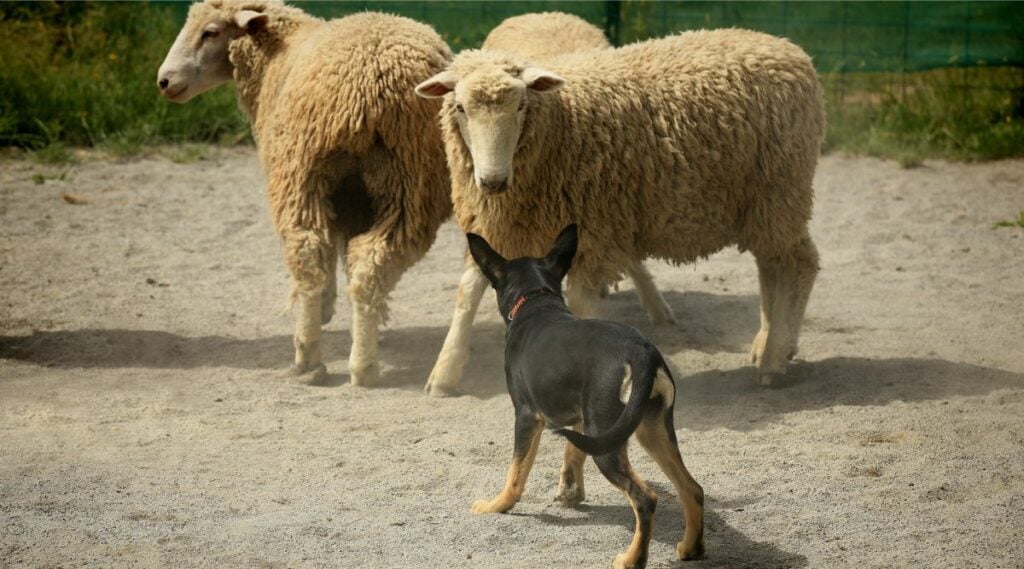
When sheep farming began to explode in Australia after opening vast lands in New South Wales and Victoria, some properties were over two million acres and were running a quarter of a million sheep. These enormous herds were too vast to be herded traditionally by convicts. Eventually, landowners fenced huge tracts, and owners contained their sheep in huge fenced tracts. In such large areas, it was necessary to use herding dogs to move the sheep. Australian sheep farmers needed a dog who could work sheep effectively in these circumstances and withstand the heat, rough terrain, and tremendous distances necessary to work herds of vast size.
The dog that rose to the task was the Kelpie. The origin of the Kelpie is disputed, but one theory put forth by Working Kelpies of America is that Kelpies originated from three pairs of working collies brought to Australia by three landowners in the late 1800s. The namesake of the breed and one of the founding mothers was a pup born to one of these working pairs of black and tan working collies near the Glenelg River in Victoria. She found a new owner who named her Kelpie, and he proceeded to begin working her on sheep. Kelpie’s owner was given an all-black male dog named Moss, a descendant of imported Scottish stock. Kelpie and Moss produced a great line of working dogs.
A nearby farm had a pair of imported Scottish black and tan herding dogs who whelped a litter. The original Kelpie was subsequently bred to a dog from this litter and produced a pup named Kelpie, who became famous in her own right. Their owner’s name became part of the two Kelpies’ names, the first being Gleeson’s Kelpie after Mr. J. D. Gleeson and the second King’s Kelpie after Mr. C.T. W. King. King’s Kelpie was so impressive in her performance at the first Sheep Dog Trial at the Forbes show in New South Wales that dogs from her strain were called “Kelpie’s pups.” Eventually, all dogs with a “Kelpie-like” appearance were referred to as Kelpies regardless of lineage.
Temperament
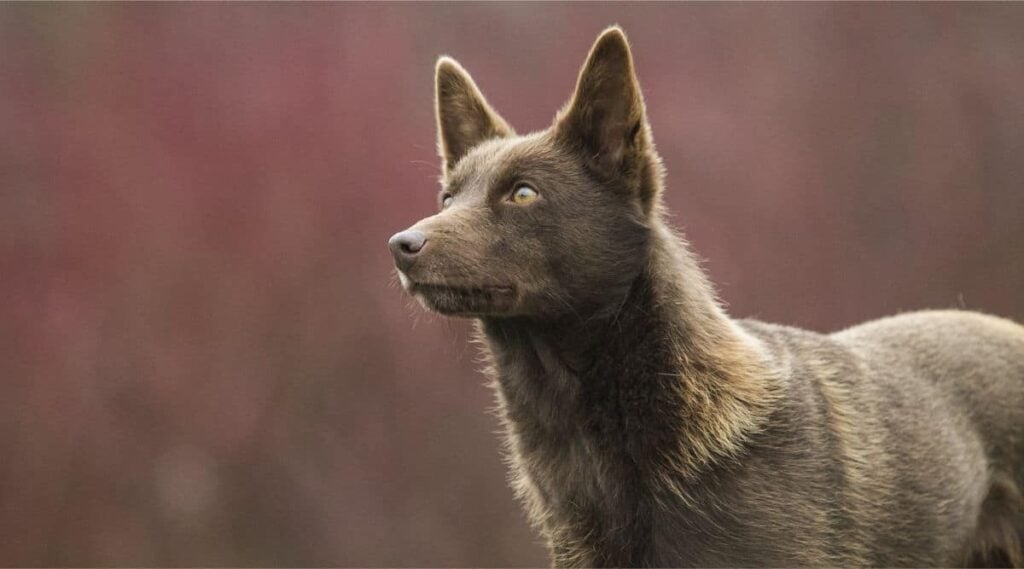
Energy is the word that best characterizes the Kelpie. There are two types of Kelpie developed in Australia; the working Kelpie is an unpedigreed dog of Kelpie type. Both types of Kelpie are cheerful and energetic. The Australian Kelpie is a pedigreed version of the dog with breed-standard conformation and solid color. The breed chosen for the show ring type is generally better able to handle city living. Both dogs are high-energy, even as far as herding breeds go.
Kelpies like to have a job and herd whatever doesn’t get out of the way. They are usually gentle with livestock and with other pets within the home. Because Kelpies were developed to work independently, moving stock out of range of their handler and responding on command to complete the job, they are quite trainable. Repetition and rewarding positive behavior are both effective training techniques for such a dog.
Size & Appearance
Australian Kelpies are handy-sized dogs, seventeen to twenty inches at the shoulder and between thirty-five and fifty pounds. Conformationally, all features make the dog more efficient in the field. His entire build is lithe, agile, and designed so he can move silently on his feet and run tirelessly across the rugged ground. The breed standard states explicitly that “any defect of structure or temperament foreign to a working dog must be considered uncharacteristic.”
Of particular importance are his legs and gait. The Kelpie must be perfectly sound in construction and movement to ensure his ability to run indefinitely across difficult terrain without breaking down. In motion, Kelpies should track true and move freely to cover the ground with minimal effort.
Coat & Colors
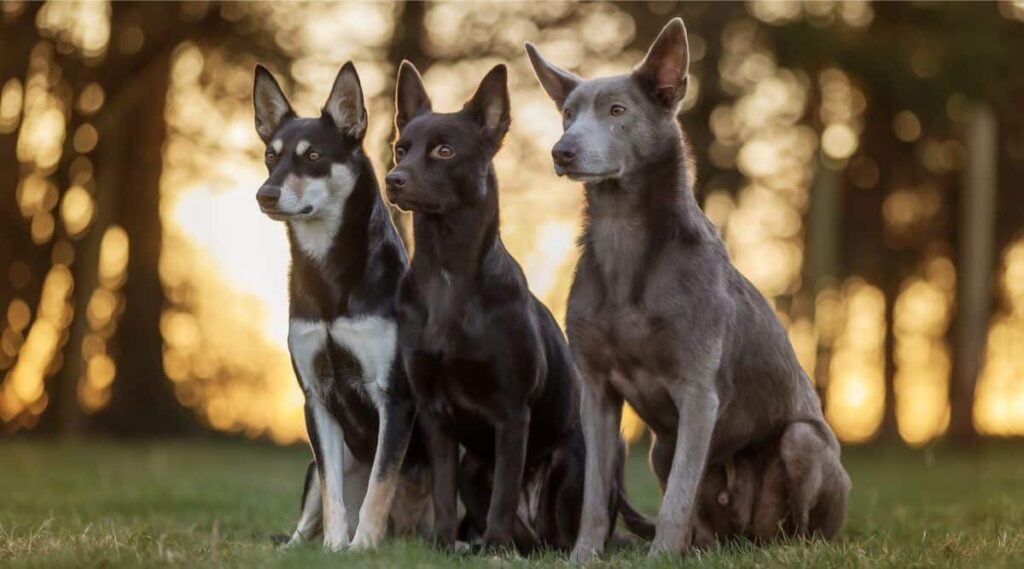
Even the Kelpie’s coat functions well in the field. Kelpies have a double coat with a short, dense undercoat. Their rain-resistant outer coat is longer and thicker along the neck and under the belly to the thighs, creating a ruff and breeches. Longer hair on his tail forms a brush, while the hair on his head is short – even in his ears.
Living Conditions
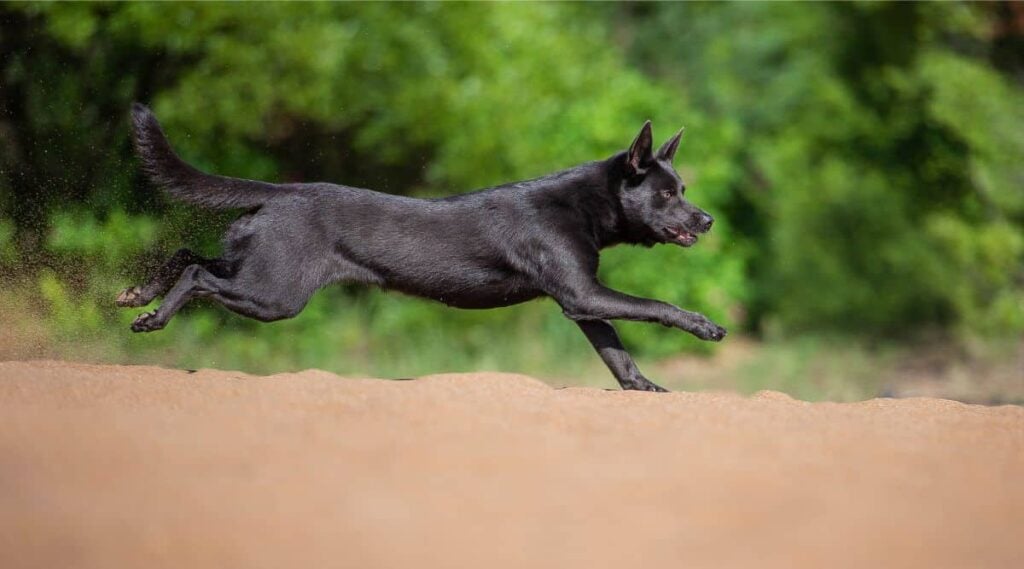
Australian Kelpies are ill-suited to apartment living. They need a daily jog or extended exercise sessions and time to run on their own in a safe area. Kelpies are well suited to canine sports like flyball and agility and benefit from basic obedience training.
Kelpies are working dogs, first and foremost. They like a job, and their herding instinct is strong enough to herd other animals and human family members. However, kelpies aren’t without a softer side, and once the job is done, a Kelpie is happy to snuggle next to family. With adequate exercise, your Kelpie can be a well-adjusted family member.
Training
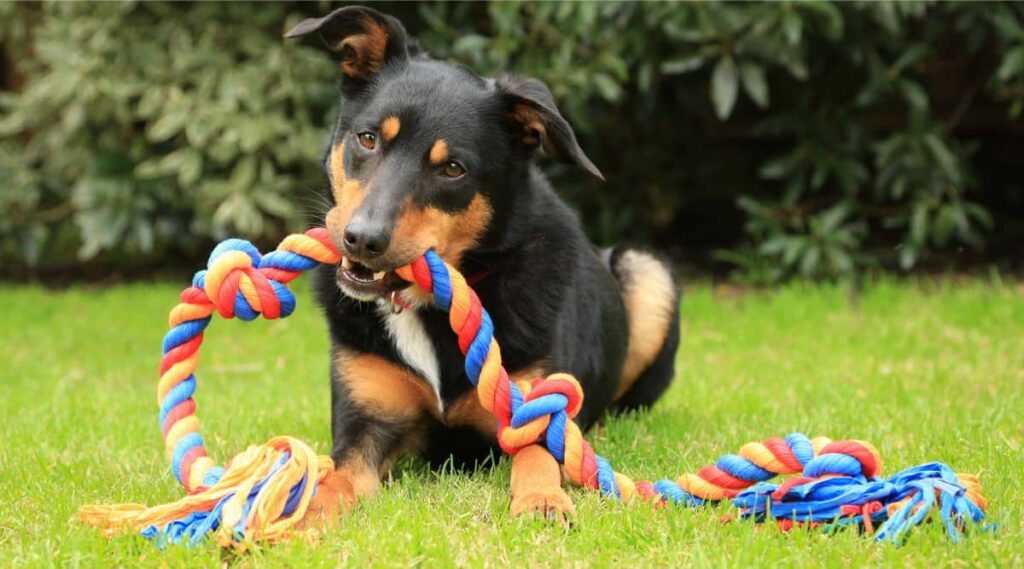
Before getting a Kelpie, be sure you’re ready for a high-energy companion with an innate herding drive. Dogs bred to work with sheep work independently as well as on the command of the shepherd, so they’re willing to make decisions on their own.
Health
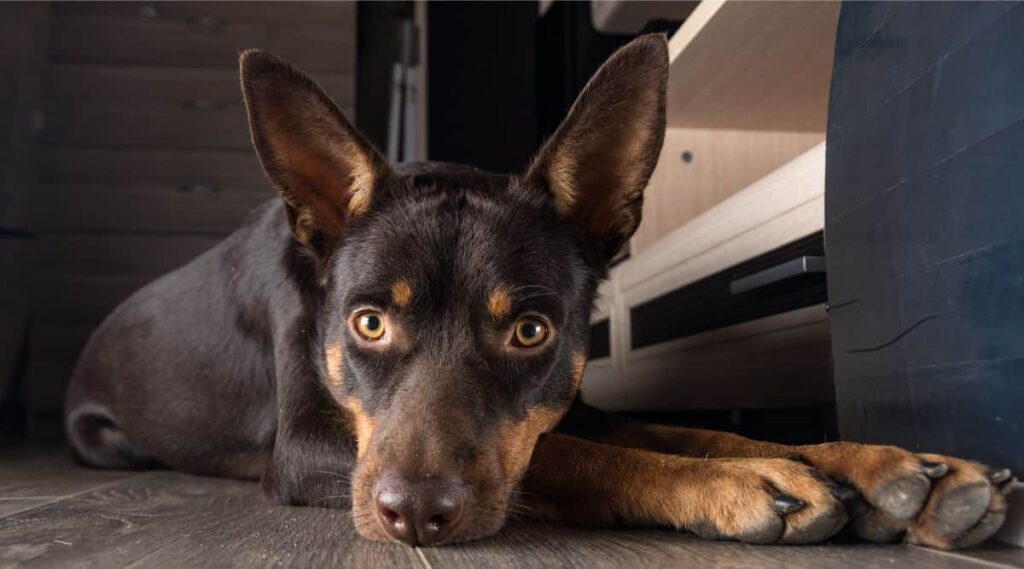
Cerebellar Abiotrophy
Cerebellar Abiotrophy is an inherited degenerative disorder that appears at different life stages depending on the dog’s breed. In Australian Kelpies, the disease manifests as juvenile-onset, appearing in pups between six weeks and six months old. The cells in the pup’s cerebellum gradually die, leading to a loss of balance and coordination that typically worsens with time. The rate of progression varies by individual. Some dogs lose their ability to walk within months, while in other cases, it takes up to eight years for the disease to become debilitating.
Joint Dysplasia
Although athletic, Australian Kelpies may suffer from joint dysplasia, a painful condition that limits mobility. Breeding dogs should have an Orthopedic Foundation for Animals (OFA) or PennHIP Evaluation, and buyers should choose puppies from parents with good evaluation scores. Your veterinarian can recommend a feeding program for your pup designed to promote slow, steady growth, which may help limit the development of growth-related joint dysplasia.
Progressive Retinal Atrophy
If your dog appears to be losing sight and has no visible cataracts, he may have Progressive Retinal Atrophy (PRA). One of the most frightening aspects of PRA is that by the time symptoms are evident, significant loss of sight has already occurred. The only visible change may be that his retinas may seem shinier than usual.
With PRA, your Kelpie may be unwilling to go into a darker area or may bump into things in a new environment. If you notice your dog acting like he struggles to see, make an appointment to have him screened. Unfortunately, there is currently no cure for PRA, but you can modify your home and routine to make things easier for him to manage.
Nutrition
When you develop a feeding regimen for your Kelpie pup, aim for slow, steady growth. Growing pups eat more than mature dogs, but Kelpies burn lots of energy. Follow the feeding chart on the feed brand, but be sure to choose a puppy food that meets the Association of American Feed Control Officials (AAFCO) standards. Feeding for moderate growth rates may help mitigate the risk of musculoskeletal problems like joint dysplasia related to rapid growth.
Your Kelpie may eat two to three cups daily as an adult, broken into two meals, depending on his activity level. Unfortunately, Kelpies tend to overeat and, although they are active, can pile on the pounds. Monitor his weight and adjust his meals accordingly. Feed the best quality nutrition that you can afford to keep this active breed healthy. A high-quality kibble including meat protein, fiber, healthy carbs, omega-3 fatty acids, vitamins, and minerals will meet his nutritional needs. You’ll be less likely to have to add costly supplements.
Grooming
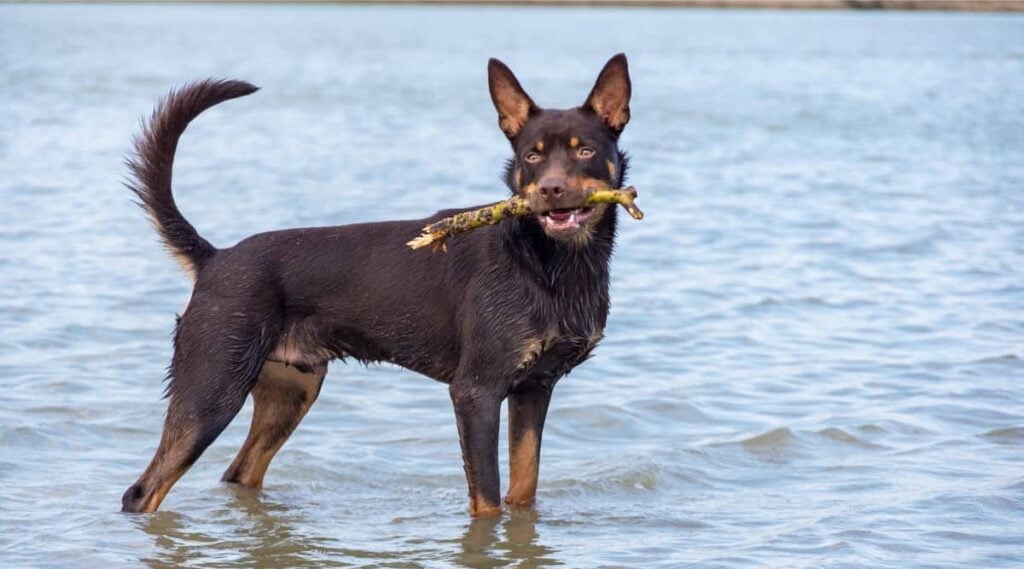
Kelpies have a short, hard outer coat over their thicker seasonal undercoat. This breed blows its undercoat between seasons, and an undercoat rake can quickly remove loose hairs to minimize his shedding. Through the rest of the season, a pin brush run through his coat periodically keeps him tidy. Brushing him stimulates the oil glands within his skin to keep his coat healthy and shining, giving the two of you time to bond.
Kelpies’ grooming needs are relatively simple. As weather allows, you may bathe your Kelpie once every four to six weeks with a shampoo and conditioner made specifically for dogs. As with any dog, trim their fast-growing nails as needed and brush your dog’s teeth regularly with veterinary toothpaste.
Breeders & Puppy Costs
Australian Kelpies usually cost between $500 and $1,500. Although landowners perfected this breed in Australia from Scottish stock, Kelpies have been imported back to Great Britain as working sheepdogs. Kelpies are becoming more widespread in the United States, although mainly as working herding dogs.
Rescue & Shelters
The Kelpie’s rarity in the United States makes it less likely to find one in a rescue or shelter situation. Try Rescue Me! Animal Rescue, Kelpies in Need North America, and your local shelter. Because Kelpies are often used on working farms, look for rehoming ads at farm centers or regional agricultural service offices.
As Family Pets
In general, this breed is:
- A friendly, hardworking dog.
- Loyal and gentle with his family.
- Extremely high-energy.
- Healthiest with about an hour total of daily exercise.
- Independent but biddable.
- Best in a home with a large yard unless you can otherwise meet his exercise needs.
Final Thoughts
If you have experience with herding breeds and want to check out this hardworking, purpose-driven breed, the Australian Kelpie may be the perfect breed for you. Every detail in the Kelpie’s build prepares him for handling rugged terrain like a nimble ninja. If you are looking for a buddy as high-energy and adventurous as you are, the Kelpie may be your perfect match.



